
Audio Tapes
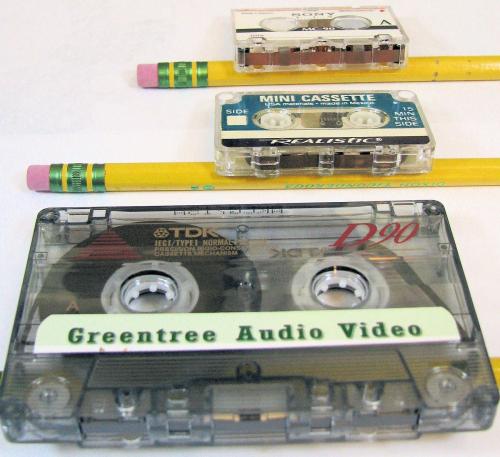
Transfer audio Cassette tape
Complete pricing below.
COMPACT CASSETTE (standard audio cassette) was developed by Philips (Belgium) in 1962 and the technology was made widely available to other manufacturers. The tape source and take-up reels are inside the cassette which simplifies tape loading and operator convenience compared to the open reel audio format. Tape transports at a speed of 4.75cm/s (1-7/8ips). The tape is 3.81 mm (0.15-inch) wide and cassettes measure 10 x 6.3 x 1.3cm (4.0 x 2.5x 0.5 inches). Most manufacturers discontinued making audio cassettes by 2003. Audio tape was replaced by CDs in the early 1980s.
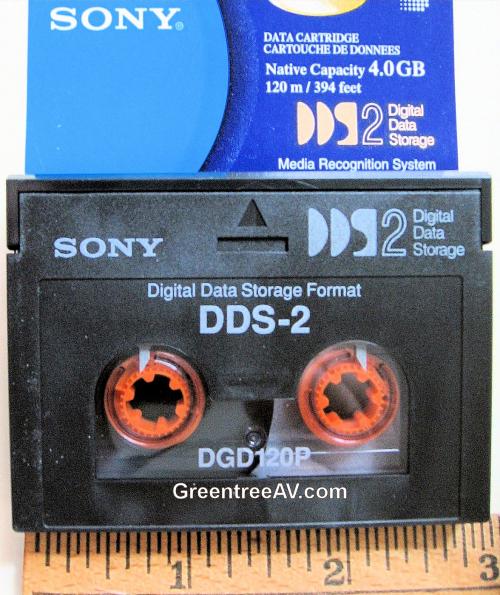
DAT (Digital Audio Tape) Transfer to File
Complete pricing below.
DAT (Digital Audio Tape) records and plays back digital audio and was introduced by Sony in 1987. Audio content providers did not produce much consumer content due to high cost and concerns that copyright laws would not protect them since consumers could make high quality direct digital clones of the content. DAT audio tapes did find use in professional settings and for computer data backup. DDS (Digital Data Storage) computer backup tapes are backward compatible for audio recordings. DAT is 3.81mm (often shown as 4mm wide (.15-inches) and measure 73 x 54 x 10.5mm in size. DAT audio is usually recorded at 44.1, 48, or 32KHz at 16 bits -or- 32KHx at 12 bits.
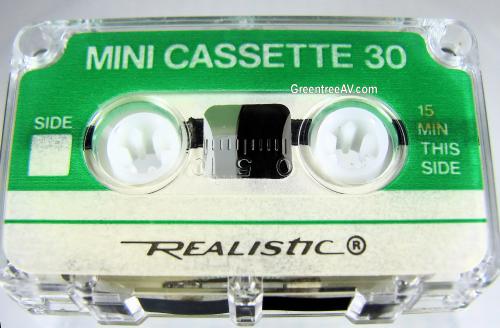
MINI audio cassette tape.

Transfer MICRO audio cassette tape
Complete pricing below.
Micro Audio Cassette was introduced by Olympus in 1969 for dictation and voice recording and were also used in telephone answering machines and ‘Walkman’ personal tape players. Stereo was introduced in 1982 for music. The tapes are small, recorders highly portable, and the audio is steady. An MC-90 tape plays for 45 minutes on each side for a total of 90 minutes at 2.4cm/s speed. Tapes can play at speeds of 2.4cm/s or 1.2cm/s. Micro audio tape is 3.81 mm (0.15-inches) wide and cassettes measure 5.0 x 3.3 x 0.8 cm (1.98 x 1.3 x 0.31-inches).
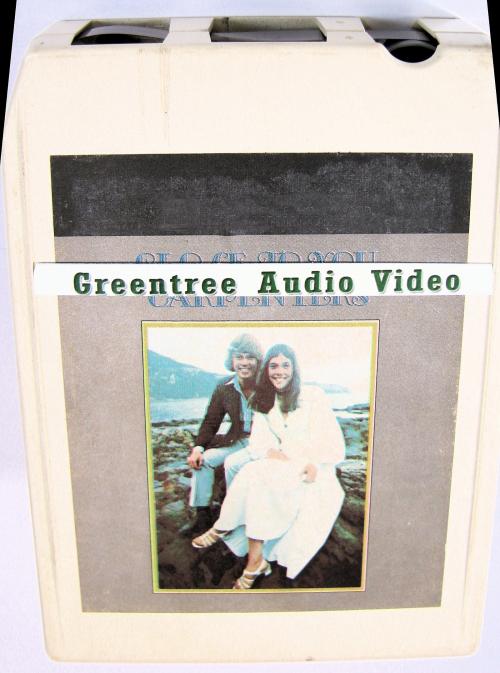
Transfer 8-TRACK audio tape to file
Complete pricing below.
8-Track audio tape cartridges were introduced in 1964 by a joint venture of manufacturers led by Leer Jet in association with Ampex, Ford, and others to provide audio content for the transportation industry and others. Ford installed 8-track tape players in automobiles starting in 1966. An 8-track cartridge has one reel that plays as an endless loop. 8-track tape transports at a speed of 3-3/4ips. 8-track tape is 6.35mm (¼-inch) wide and cartridges measure 5-1/2 x 4 x ¾-inches. 8-track was replaced by the standard audio cassette in the late 1970s.
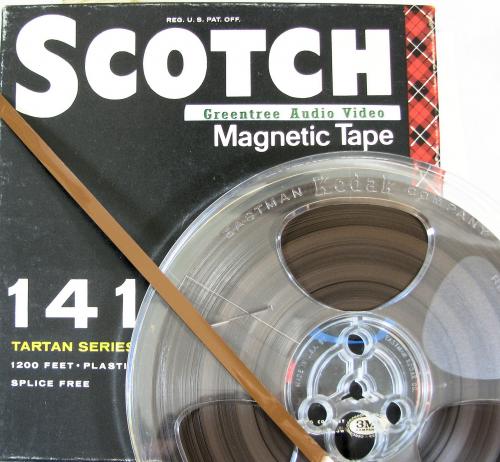
OPEN REEL audio tape transfer
Complete pricing below.
Audio reel to reel (open reel, R2R) tape followed the wire recording format and early reel to reel recordings were made on steel tape. In the late 1920s audio tape was made with a ferrite oxide coating on a paper backing (Pfleumer). Audio tape was later made with a backing made of acetate (AGFA, 3M) or polyester. Light will go through the side of a tape reel if it is acetate and will not if the material is polyester. In 1898 it was found that adding a DC bias improved recordings, in 1921 it was found that adding an AC bias greatly improved recordings, but it was not until 1940 that the widespread commercial value of AC bias was realized and was standardized for modern audio tapes. Ampex and others offered “modern” tape recorders by 1948.
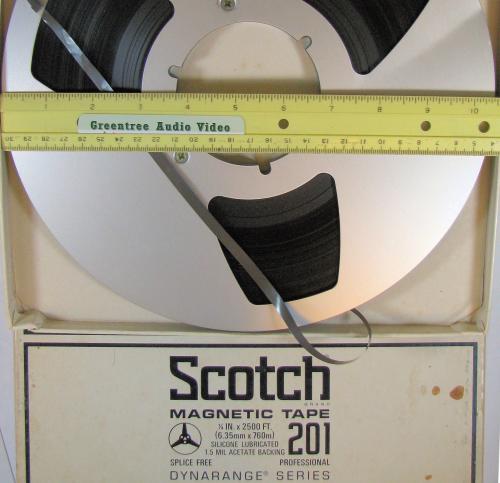
Transfer 10.5-inch open reel audio tape, 3-inch NAB hub
Complete pricing below.
NAB Audio Tape Hub is a 3-inch diameter keyed center hole in large 10.5-inch open reel audio tapes used in professional and broadcast applications. The 3-inch diameter NAB (National Association of Broadcasters) drive hole is used for large 10.5-inch diameter x ¼-inch audio tape reels as well as ½-inch and wider multitrack audio tapes that often rotate at fast speeds of 7-1/2, 15, or 30ips; NAB hubs are also used in large or heavy open reel video tapes.
Sometimes the tape has no metal or plastic reel and the tape is stored in a 'pancake' box. It must be carefully loaded onto a Pancake split-reel to play the tape.
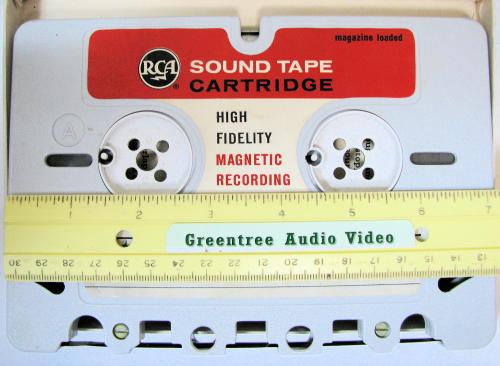
RCA SOUND CARTRIDGE audio transfer to file
Complete pricing below.
The RCA Sound Tape Cartridge was developed by RCA. The tapes were used by radio broadcasters for commercials, jingles, station ID, and music until the early 1970s. This audio tape was also sold by Scotc/3M called a Quick-load cartridge since the source and take-up reels were both inside the cassette. The cassette contains ¼-inch wide and the cassette measures 7-3/16" x 5" x 1/2" thick. These cartridges typically play at 3-3/4 ips and can be recorded with 2-track stereo or 4-independent tracks; the length is typically 560ft (1 hour stereo both sides, 2 hours 4-track mono) or 320ft (34 min Stereo, 68 min 4-track mono).
Testimonials
I can't thank you enought for repairing the 8-track tape and transfer to mp3 file on flash drive. This brought back memories of out champoinship basketball game in 1972 and I will share it with other members of the team. We thought this audio recording was last to the ages. Thanks for your expertise- again! Eric in Colorado
Received the USB and 16" Transcription record disks today. What a thrill it was to hear my Dad's voice again! We are very pleased to know for sure what was on these very large records. Patti, Missouri MO 65652
The [2 RCA cartirdge] recordings are great! I can't believe I can hear my family from 1962-68 again. The results are the best I could have hoped for. Exellent work! Tom, Wyoming 82801
Received the tape and CD. CD sounds good [recovered after going through the washing machine!]. I cried during it because my down syndrome brother who has passed, was singing and talking on it; we were very close. Thanks again for all your help.
Dee CA California 95628
It was fun to listen to and we are using the [audio cassett- CD] in a 50th anniversary DVD slide show. Thank You,
Chrissy Texas TX
Exciting...thanks for saving part of our life and for your perfect customer service,
Kevin
Thanks, You did a terrific job at a very reasonable price (10.5" NAB, Dbx audio tapes to aaif Download). I appreciate the quick turnaround. It has been fun for me and my family to listen to these recordings I made more than 40 years ago. Best,
Jeff Chicago Illinois IL 60654
Thank you so much for your efforts to bring these audio Reel-to-Reel tapes back to life for me! It has been 40 years since I have heard these recordings. Wow what college memories. Good to go. Chris, OH Ohio 4445
How it works:
2. Print our SHIPPING LABEL from the tab at the top of the web page.
3. Number your tapes/media, keep a list, and enclose titles and contact info.
4. Seal in plastic bags and pack well, save the Tracking number.
Recommend Postal Priority or Advantage mail most orders. Heavy: UPS.
5. We confirm arrival, email findings after recorded, and bill using PayPal.
Paypal accepts credit cards - you do not need to be a member (we are).
Prepay and checks accepted; make checks payable to "Anthony Schreiber".
6. Order shipped, Downloads after payment. Normal completion is 3 weeks.
7. Most shipments: Postal Priority or Advantage mail $15.00.
